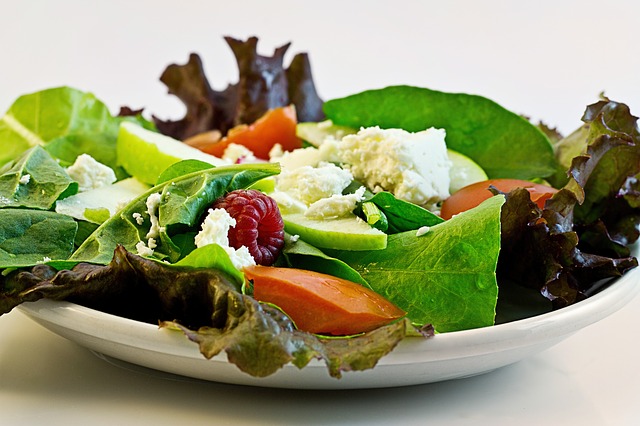A gluten-free diet refers to a diet plan that excludes the composite protein called “gluten” which is found in wheat, barley, rye, and oats. It is also a vital ingredient of several food items such as bread, pastries, and cereals.
The diet is recommended for people who suffer from certain medical conditions that are caused by gluten intolerance. Among these diseases are celiac disease and non-celiac gluten sensitivity disorders.
Some studies have also found a correlation between gluten sensitivity and some skin diseases such as eczema and psoriasis. Apparently, an intolerance for gluten triggers an allergic reaction and inflammation which causes the flare-ups to appear.
Thus, eliminating gluten from the daily meals can be beneficial for patients who are diagnosed with these conditions, as well as for those who wish to have a balanced gut and healthy skin.
But since most food products contain this particular protein, making the dietary changes can be challenging and confusing at first, especially when one does not consult a nutritionist or dietician. Thankfully, a lot of resources are available to provide guidance on the matter.
Here are some practical and helpful tips on how to observe a gluten-free diet:
1. Read the labels
Reading food labels is the best place to start especially for those who are just beginning to learn about products that contain gluten. These days, gluten can show up anywhere and it is best to read the food packages which ordinarily lists the ingredients it contains.
Watch out for the grains such as wheat, rye, barley, oats, and spelt. Food that contains wheat products such as durum flour, farina, Kamut, einkorn, and semolina are likewise harmful. If any of these are listed on the label, then avoid that product and make a mental note of it. Instead, opt for items that are labelled as “gluten-free” or “wheat-free.”
Most countries require manufacturers and producers to properly label their products so it won’t be so difficult to determine whether or not an item includes the ingredients to be avoided.
2. Be familiar with products that contain gluten
When reading labels has become a habit, it becomes easier recall or to take note of those items to be avoided. It will also help to either list or memorize the names of products or food sources that contain gluten. This will keep one focused on food substitutes when grocery shopping.
3. Beware of cross-contamination
There is cross-contamination when non-gluten items come in contact with those that contain the protein. This occurs during the manufacturing, preparation, or cooking process when the same equipment or utensils are used.
For people with gluten intolerance, even the smallest bit of wheat can trigger various symptoms. As such, care must be taken to avoid cross-contamination.
Make sure to always check product labels and stay away from items that state “may contain gluten.” In the kitchen, avoid utilizing the same utensils as those used in the preparation of meals that have gluten. In the least, wash them thoroughly before preparing the non-gluten dishes. Also, store the food groups separately to avoid the risk of cross-contamination.
4. Substitute grains and cereals
Going gluten-free doesn’t mean skipping grains and cereals entirely. Whole grains should still comprise a considerable portion of the meals. Nutritionists and doctors alike recommend having about 3 servings of whole grains a day.
What can be done is to substitute wheat and gluten products for healthy grains. These include quinoa, brown rice, corn, buckwheat, sorghum, teff, millet, and amaranth. Also, replace the regular pasta with rice noodles, quinoa pasta, or gluten-free buckwheat.
These grains contain rich fiber content, antioxidants, vitamins, minerals, calcium, selenium, and magnesium which make them ideal alternatives.
5. Switch to gluten-free bread
As with grains and cereals, bread should also remain a part of the daily diet. Gluten-free breads are available in some supermarkets, bakeries, and health food stores.
It may also be more convenient and less expensive to make home-baked bread. Buy a bread maker (or use an oven), a cookbook, and gluten-free ingredients, whip up the dough and enjoy healthy servings of home-baked, gluten-free bread.
Experimenting with other pastries such as cupcakes and muffins is also a good idea since most store-bought items use wheat-based flour. Several cookbooks that promote the use of gluten-free flour and other ingredients are available and may be readily consulted.
6. Stock up on produce and lean proteins
Aside from whole grains, the gluten-free diet is also largely comprised of fruits, vegetables, and lean proteins such as beans, nuts, legumes, fish, and eggs. In their natural state, these food sources do not contain any gluten and so they are beneficial to those with gluten sensitivity.
An additional advantage of consuming more of these foods is getting the most natural antioxidants and nutrients that are good for nutrition.
So, stock up on these foods in the pantry or the refrigerator to prepare healthy meals every day.
7. Don’t cut out the dairy entirely
Some patients with celiac disease are also lactose intolerant which makes consuming dairy products a bit problematic. However, in most cases, the symptoms including gas, bloating, and diarrhea are temporary and these go away on their own when the small intestine heals.
Regardless of whether lactose intolerance is a temporary or permanent condition, dairy products should not be entirely cut out of the diet because they provide vital minerals such as Calcium.
What can be done, is to consume non-gluten dairy products in small doses and to space the consumption throughout the week to minimize or delay the onset of lactose intolerance symptoms.
8. Avoid sauces and salad dressings that contain gluten
Most of the packaged salad dressings, sauces, dips, and condiments that are sold in supermarkets contain gluten. Thus, learning to prepare a gluten-free dressing or sauce in the home is a good option. This will ensure that the dressing prepared is healthy and nutritious.
A good alternative is using a mixture of hemp oil, apple cider vinegar, and lemon juice. This particular dressing contains ample amounts omega fats and vitamins which makes it a healthy choice.
Another option is to purchase Tamari sauce. While most soy sauce products contain wheat, Tamari sauce is usually gluten-free. It can be bought in Asian stores, grocery outlets, and supermarkets.
9. Experiment in the kitchen
Another great tip for staying gluten-free is to prepare home cooked meals – everything from main dishes, salads, pastries, and desserts. There are numerous cookbooks on sale that provide gluten-free, healthy recipes that can be followed. A wide selection of these resources is also available online through informative websites and videos.
An interesting option is to prepare Indian-inspired dishes that are composed of legumes, beans, corn, quinoa, and brown rice. These provide nutritional fiber, protein, and vitamin B which are essential for maintaining good health.
Once more knowledgeable about gluten-free product substitutes, cook up regular meals but replace the wheat-based ingredients with non-gluten alternatives.
10. Research and shop smart
Learn which health stores, supermarkets, and bakeries in the neighborhood or nearby areas sell gluten-free products and ingredients. Shop at these stores to make sure only the best gluten-free items are stored in the pantry or in the home. Also, make sure to be familiar with the aisles at the supermarket where gluten-free food substitutes are shelved. This makes shopping convenient and hassle-free.
It is also good to search for stores online selling gluten-free products. Go through these websites and find out which ones offer quality products.
11. Choose gluten-free cuisines or restaurants
Eating out can be challenging for those who go gluten-free. But this doesn’t mean being stuck with home cooked meals for life. There are restaurants and coffee shops that do offer gluten-free choices. Simply do some research to find the best options in the locality.
As previously mentioned, Indian cuisine is a healthy choice. Other ethic-inspired diners also offer a menu that includes selections of corn-based or quinoa-based dishes.
It goes without saying that it is best to stay away from American and Italian restaurants. The bread and pastries are likely to contain wheat and finding healthy substitutes in these restaurants can be tricky. In the event that eating at such places is unavoidable, talk to the chef or manager to discuss the predicament and ask if they could prepare a separate meal that is gluten-free.
12. Focus on the nutritious options
Don’t lament over the fact that most foods, especially the tasty favorites like pasta dishes, cakes, muffins, and desserts have to be avoided. There is an alternative for most of the food choices that the palate was previously accustomed to. While it may take some adjustment, stay focused on getting the right nutrition. Remember that the body needs the fiber, nutrients, vitamins, and minerals to combat or recover from symptoms.
Besides, gluten-free meals can still be flavorful. With more practice in grocery shopping and food preparation, eating healthy and nutritious options can be an enjoyable experience.
Having to make dietary adjustments can be daunting and tricky in the beginning. It may even seem like the worst thing to ever happen. However, shifting to a gluten-free diet has its benefits which include an improved health, a balanced gut, and better-looking skin. So try out this diet, make the big change, and discover its rewards!
If you want to know what foods will help you shape up and shed inches while providing natural cure to illnesses, then check out the Best Foods That Rapidly Slim & Heal In 7 Days program.




